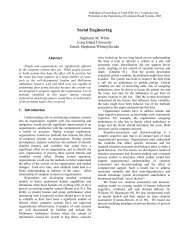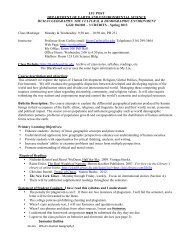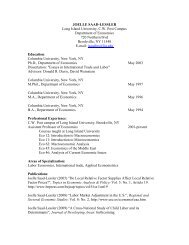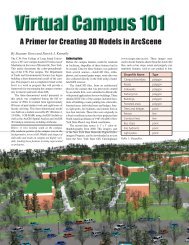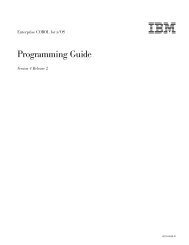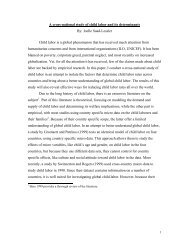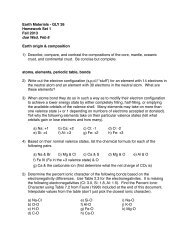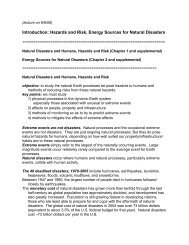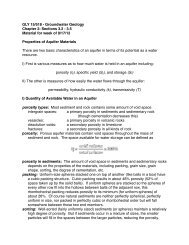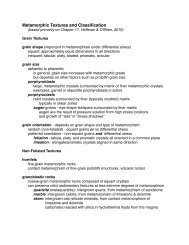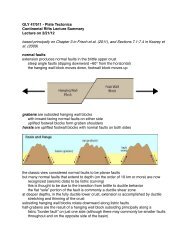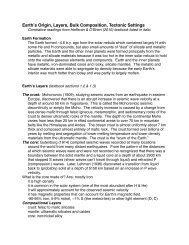isostasy answers - Myweb @ CW Post
isostasy answers - Myweb @ CW Post
isostasy answers - Myweb @ CW Post
Create successful ePaper yourself
Turn your PDF publications into a flip-book with our unique Google optimized e-Paper software.
V.J. DiVenere - 2/13/12<br />
D) Now imagine that millions of years of weathering and erosion have removed 20 km from<br />
the top of the thickened crust.<br />
- How much will the crust rise up? (Consider how deep into the mantle the root of the mountain<br />
will be, r in the figure, for 65 km - 20 km = 45 km thick crust, compared to in part C)<br />
( 2700 kg/m 3<br />
) ( 45 km) = ( 2700 kg/m 3<br />
) ( 35 km) + ( 3300 kg/m 3<br />
) i r<br />
( 2700 kg/m 3<br />
) 45 km<br />
( ) − ( 2700 kg/m 3<br />
) ( 35 km)<br />
( 3300 kg/m 3<br />
)<br />
= r<br />
r = 8.2 km below bottom of normal crust<br />
so, mountain crust (bottom) isostatically rose up from 24.5 below to 8.2 km below<br />
24.5 km - 8.2 km = 16.3 km<br />
20 km erosion yielded 16.3 km uplift (or 0.82 * 20 km)<br />
- How high above the top of normal crust, e, in the figure, will the mountain now be?<br />
e = 45 km - 35 km - 8.2 km = 1.8 km above top of normal crust<br />
- How much lower are the mountains after the 20 km of erosion?<br />
old elevation - new elevation = 5.5 km - 1.8 km = 3.7 km<br />
so, 20 km of erosion only resulted in 3.7 km lowering of the mountains!<br />
(3.7 km lower = 0.18 * 20 km, complement of the 0.82 * 20 km uplift)<br />
- Surprised?<br />
Wow!



